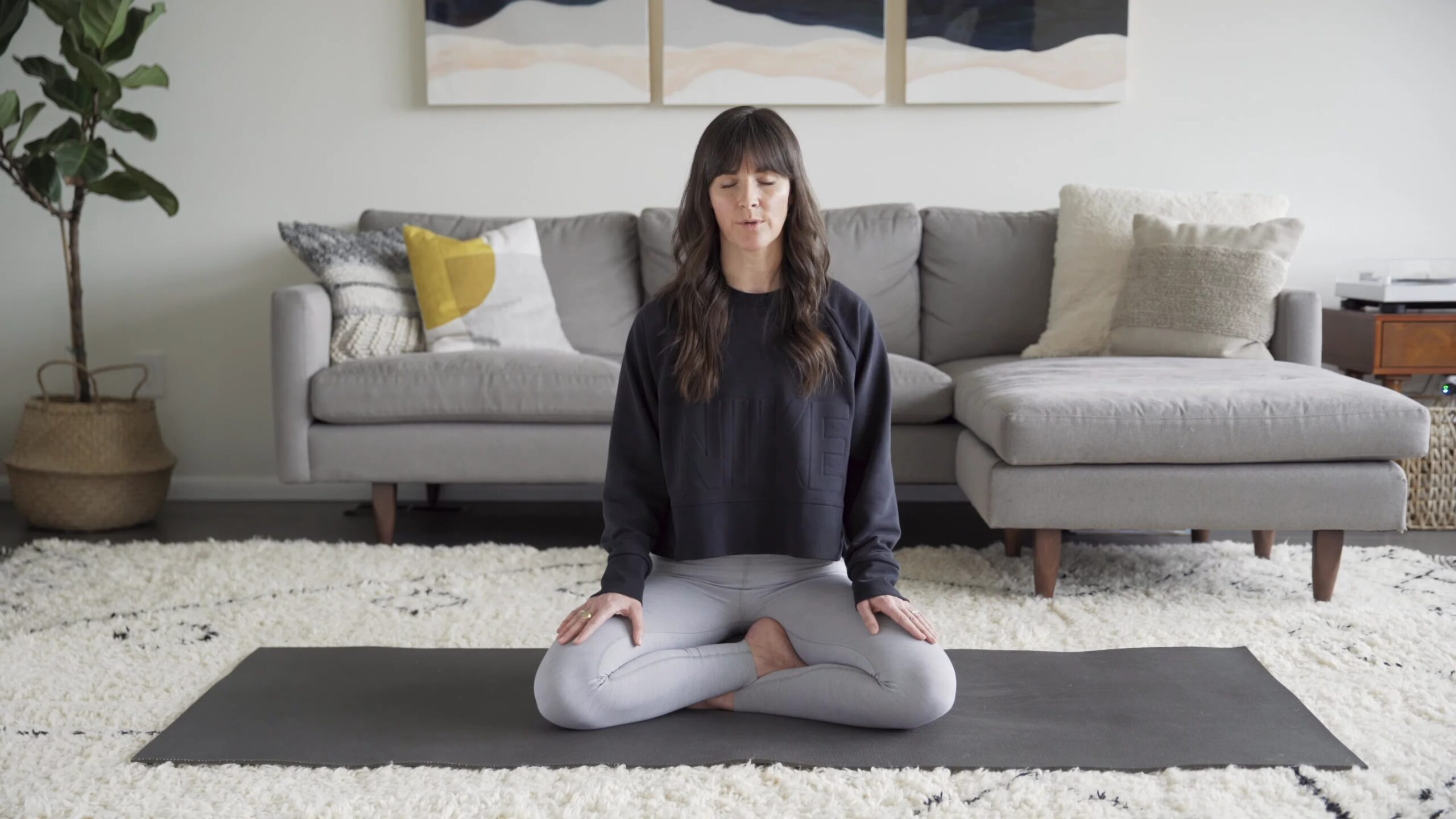Breathwork meditation, an ancient practice with roots in yoga, has re-emerged as a popular method for managing stress and enhancing well-being. By focusing on controlled breathing patterns, practitioners aim to release toxins and stress, leading to numerous potential health benefits.
Today, we discuss the world of breathwork meditation, exploring its techniques, benefits, and considerations for a modern audience.
The Essence of Breathwork Meditation
The Historical Roots
Breathwork meditation is not a new concept. It’s been a cornerstone of yoga practices for thousands of years, where it’s known as “Pranayama” – the regulation of breath. This ancient technique was developed with the understanding that the way we breathe directly influences our physical and mental state.
For those interested in exploring various breathwork techniques and their benefits, Somabreath offers a range of courses and resources, providing a knowledge base of this ancient yet ever-relevant practice.
The Modern Relevance
In today’s fast-paced world, stress and anxiety are common challenges. Breathwork offers a way to combat these issues, making it more relevant than ever. By consciously changing our breathing patterns, we can directly impact our nervous system, leading to a state of calm and relaxation.
The Techniques of Breathwork Meditation
1. Deep Abdominal Breathing
This technique involves deep, even breaths from the abdomen, promoting full oxygen exchange and engaging the diaphragm effectively.
2. The 4-7-8 Breath
Developed by Dr. Andrew Weil, this technique involves inhaling for 4 seconds, holding the breath for 7 seconds, and exhaling for 8 seconds. It’s known for its calming effect.
3. Alternate Nostril Breathing
A staple in yoga, this involves alternately breathing through one nostril while closing the other, then switching. It’s said to balance the two hemispheres of the brain.
4. Breath of Fire
A more vigorous technique, it involves quick, forceful breaths, typically used in Kundalini yoga for energy and detoxification.
5. Holotropic Breathwork
Developed in the 1970s, this involves rapid breathing to induce altered states of consciousness, often used for deep emotional and spiritual exploration.
The Science Behind Breathwork
Breathwork isn’t just a spiritual or relaxation technique; it’s grounded in science. Controlled breathing can alkalize blood pH, reduce inflammation, and elevate mood. It also has a positive impact on the central nervous system, helping regulate the body’s response to stress.
The Health Benefits of Breathwork Meditation
Physical Benefits
- Balanced Blood Pressure: Regular practice can help in regulating blood pressure.
- Respiratory Function: It strengthens respiratory muscles and improves lung capacity.
- Alkalizing Blood pH: By altering breathing patterns, it can help balance blood pH levels.
Mental and Emotional Benefits
- Mood Elevation: Breathwork can release endorphins, elevating mood and combating depression.
- Anxiety Reduction: It helps in reducing symptoms of anxiety by promoting relaxation.
- PTSD Symptom Reduction: There’s evidence suggesting it can help in reducing symptoms of PTSD.
Potential Drawbacks and Considerations
The Risk of Hyperventilation
One of the main risks associated with breathwork is hyperventilation, which can lead to dizziness, lightheadedness, and in rare cases, permanent brain damage.
The Need for Focus
Breathwork requires concentration and practice. It may not be suitable for everyone, especially those who find it difficult to focus or have certain respiratory conditions.
Integrating Breathwork Into Daily Life
Starting with the Basics
For beginners, the key is to start simple. Deep abdominal breathing is an excellent starting point. This technique can be practiced anywhere, anytime, making it highly accessible.
Begin with just a few minutes a day and gradually increase the duration as you become more comfortable.
Creating a Routine
Consistency is crucial for reaping the full benefits of breathwork. Setting aside a specific time each day for practice can help in establishing a routine. Early morning or before bedtime are popular choices, as they can set the tone for the day or promote relaxation before sleep.
Combining with Other Practices
Breathwork can be seamlessly integrated with other wellness practices like yoga, meditation, or even light exercise. This combination can enhance the overall experience and benefits, creating a more holistic approach to health and wellness.
Advanced Techniques and Considerations
As one progresses in their breathwork journey, exploring advanced techniques like the Breath of Fire or Holotropic Breathwork can be beneficial.
However, it’s important to approach these practices with caution and ideally under the guidance of a trained professional, especially for techniques like Holotropic Breathwork that induce altered states of consciousness.
The Role of Breathwork in Stress Management
In our stress-filled lives, breathwork serves as a powerful tool for managing anxiety and stress.
Activate the body’s natural relaxation response, and breathwork can shift the balance from the sympathetic nervous system (responsible for the fight-or-flight response) to the parasympathetic nervous system (which promotes rest and digest). This shift is crucial for long-term stress management and mental health.
The Impact on Mental Health
Beyond stress relief, breathwork has shown promise in improving overall mental health. Practices like the 4-7-8 breath are relaxation techniques and tools for mental resilience.
Regular practice can lead to lasting changes in how we handle emotional challenges and can be particularly beneficial for those dealing with anxiety, depression, and PTSD.
Addressing the Cons: Safety and Best Practices
While breathwork is generally safe, it’s essential to practice it correctly to avoid risks like hyperventilation. Beginners should start slowly and increase the intensity gradually. It’s also advisable to practice in a safe, comfortable environment and, if possible, under the guidance of a trained instructor.
Those with pre-existing health conditions, especially respiratory issues, should consult a healthcare provider before starting.
FAQs]o0Can Breathwork Meditation Help with Chronic Pain?
Yes, it can help manage chronic pain. Reduce stress and promote relaxation, and it will decrease the perception of pain and improve overall pain management.
Is Breathwork Safe for Pregnant Women?
Pregnant women should consult with their healthcare provider before starting breathwork. While gentle techniques like deep abdominal breathing are generally safe, more intense practices should be approached with caution.
How Quickly Can One See the Benefits of Practicing Breathwork Meditation?
The benefits of breathwork can be felt almost immediately in terms of relaxati][=on and stress relief. However, long-term benefits like improved mental health and respiratory function may take a few weeks of consistent practice to become noticeable.
Can Children Practice Breathwork Meditation?
Yes, children can practice it under adult supervision. Simple techniques like deep abdominal breathing can be beneficial in helping them manage stress and emotions.
Does Breathwork Meditation Require Special Equipment?
No, it does not require any special equipment. It can be practiced anywhere, making it a highly accessible tool for wellness.
Can Breathwork Meditation Replace Traditional Medical Treatments?
It should not replace traditional medical treatments, especially for serious conditions. It’s best used as a complementary practice to enhance overall well-being and support medical treatments. Always consult with healthcare professionals for medical conditions.
Final Words
Breathwork meditation offers a gateway to enhanced physical and mental well-being. Its rich history, coupled with modern scientific backing, makes it an accessible and effective tool for anyone looking to improve their health and manage stress.
While there are considerations to keep in mind, the benefits of mindful breathing are profound and far-reaching.
Whether you’re looking to calm your mind, improve your respiratory function, or simply find a moment of peace in your day, breathwork meditation can be a powerful ally on your journey to wellness.


















